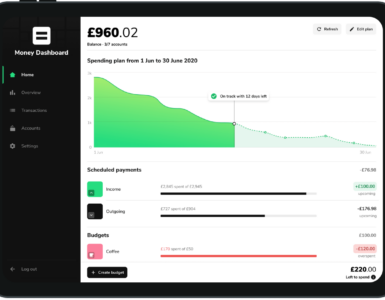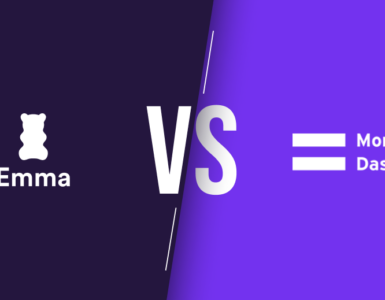Have you ever found yourself succumbing to impulsive purchases, only to regret them later?
Whether it’s the latest gadget, a trendy outfit, or an impulse meal at a fancy restaurant, impulse spending can quickly drain your bank account and hinder your financial goals.
The good news is that there’s a simple yet effective strategy that can help you curb these impulsive tendencies: the 30-Day Rule.
What is the 30-Day Rule?
The 30-Day Rule is a behavioral technique designed to help individuals overcome impulse spending. The principle is straightforward: whenever you feel the urge to make a non-essential purchase, you force yourself to wait for 30 days before buying it.
By implementing this waiting period, you give yourself ample time to evaluate whether the purchase is a true necessity or simply a fleeting desire.
How the 30-Day Rule Works
The 30-Day Rule involves four key steps:
Identify the Impulse: The first step is to recognise when you are experiencing an impulse to buy something. This could be while you’re browsing online, strolling through the mall, or even when a flashy advertisement captures your attention.
Create a List: When you encounter an item you want to buy on impulse, instead of making the purchase right away, jot it down on a list. This list will serve as a record of your impulses and give you a chance to reevaluate those desires later.
Wait for 30 Days: This is the critical part of the rule. Refrain from making the purchase for at least 30 days. During this waiting period, avoid revisiting the item or product page intentionally.
Reevaluate: Once the 30 days have passed, revisit the list of items you initially wanted to buy. Ask yourself some key questions: Do I still want or need this item? Will it add value to my life? Can I afford it without compromising other financial goals? By reflecting on these questions, you can make a more rational and informed decision.
The Benefits of the 30-Day Rule
Avoid Buyer’s Remorse: Waiting for 30 days before making a purchase can significantly reduce buyer’s remorse. Many impulsive buys lose their appeal over time, and you’ll be grateful you didn’t waste your hard-earned money on something you didn’t truly need or want.
Improved Financial Discipline: Implementing the 30-Day Rule enhances your financial discipline. It helps you break the cycle of immediate gratification and encourages thoughtful spending.
Save Money: By curbing impulsive spending, you’ll naturally save money. Those small, frequent impulse purchases can add up to a significant amount over time. By eliminating them, you can allocate your funds towards more meaningful goals like building an emergency fund, paying off debts, or investing for your future.
Identify True Priorities: The waiting period allows you to prioritise your spending based on genuine needs and values. You’ll gain a better understanding of what truly matters to you, making it easier to allocate your resources wisely.
The 30-Day Rule is a powerful tool that empowers you to take control of your finances and develop better spending habits. By stepping back and critically evaluating your impulses, you’ll become a more conscious consumer. Over time, you’ll likely notice a positive impact on your financial well-being, reduced clutter from unnecessary purchases, and a greater sense of satisfaction with the items you do choose to buy.
Remember, the 30-Day Rule is not about depriving yourself of enjoyment, but rather about making mindful choices that align with your long-term financial goals. So, the next time you find yourself tempted to make an impulse purchase, take a step back, give it 30 days, and watch as your financial journey transforms for the better.
Case Study: Sarah’s Journey
Meet Sarah, a young professional who often falls prey to impulse spending. One day, while scrolling through her favorite online store, she comes across a sleek smartwatch that promises to do it all – track fitness, receive notifications, and even answer calls. Tempted by its features and the allure of owning the latest tech gadget, Sarah feels an overwhelming urge to purchase it right away.
However, having read about the 30-Day Rule recently, Sarah decides to give it a try before making an impulsive purchase. She follows the four steps diligently:
- Identify the Impulse: Sarah acknowledges that she’s experiencing an impulse to buy the smartwatch driven by its appeal and the fear of missing out on the latest technology.
- Create a List: Instead of clicking the “Buy Now” button, Sarah adds the smartwatch to her 30-Day Rule list. She makes a note of the product name, its price, and the reasons she wants it.
- Wait for 30 Days: For the next 30 days, Sarah resists the urge to revisit the smartwatch’s product page intentionally. She distracts herself with other activities, such as engaging in hobbies, reading, and spending time with friends.
- Reevaluate: After the 30-day waiting period, Sarah sits down with her list and takes a closer look at her initial reasons for wanting the smartwatch. As she reflects, she realises that while the smartwatch does offer intriguing features, her current fitness tracker and smartphone already fulfill most of her needs.
Furthermore, Sarah has set a financial goal to save for an upcoming vacation. The money she would spend on the smartwatch could make a significant contribution to that goal. After careful consideration, Sarah decides to forego the impulse purchase. Instead, she decides to allocate the money she would have spent on the smartwatch to her vacation savings fund.
Sarah’s experience with the 30-Day Rule proved to be transformative. By implementing the waiting period, she avoided an impulsive purchase that could have left her with buyer’s remorse and an unnecessary dent in her bank account. The exercise helped her differentiate between genuine needs and mere desires, ultimately leading her to prioritise her financial goals.
As Sarah continues to apply the 30-Day Rule in her daily life, she notices a significant reduction in impulse spending. She becomes more mindful of her purchases, ensuring that each expense aligns with her long-term financial aspirations. By mastering her impulsive tendencies, Sarah gains greater control over her finances, setting herself on a path to financial security and fulfilling life goals.
So, if you find yourself struggling with impulsive spending, give the 30-Day Rule a try. You may be surprised at how this simple yet powerful strategy can revolutionise the way you approach your financial decisions, leading you towards a more financially responsible and fulfilling future.
Are you interested in more rules to stop impulse spending? The 10 second one can be your next one.







[…] the 30-day rule when contemplating non-essential purchases. Delay buying the item for 30 days and assess whether […]
[…] curb impulse spending, apply the 30-day rule. When considering a non-essential purchase, wait for 30 days before buying it. This waiting period […]